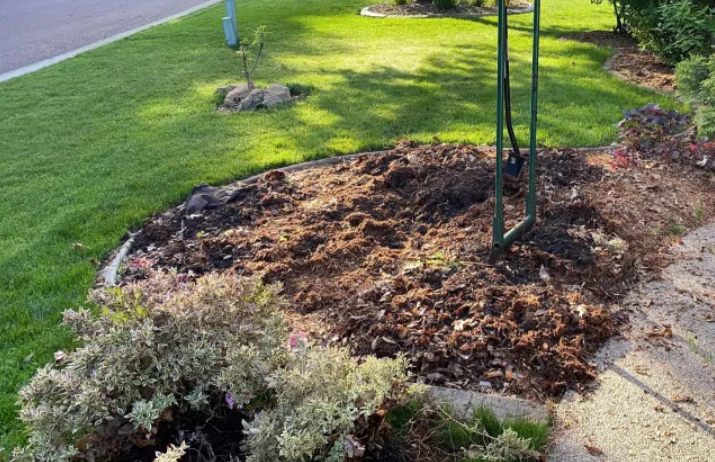There's nothing much better than the green explosion that happens after a good rain. Plants and trees seem to perk up — all flora looks more vibrant, lush, and alive.
One Redditor headed out to their front yard to document how good their native lawn looked after a recent rain and posted it to the r/NoLawns subreddit. "After storm yarden tour," they captioned the video — "yarden" being a mix of "yard" and "garden."
The video begins with a peaceful walk up a path to the front door, providing a close look at two gorgeous gardens, which are full of a wide range of plants, including a colorful array of flowers popping out of the different shades of green. The proud plant parent then headed out to the middle of the lawn, where there was another stunning section of lush plants.
"The garden is beginning to enter heavy midsummer bloom season, and is finally filling in after year one last year," they commented. The OP also shared a post from two years ago with photos showing the early stages of this epic transformation from a boring monoculture lawn into a spectacular yarden.
🗣️ If you have a lawn, what aspect of it do you value most?
🔘 The way it looks 🤩
🔘 The way my family uses it 👪
🔘 It's enjoyable to mow 😎
🔘 It's cheap to maintain 💰
🗳️ Click your choice to see results and speak your mind
Surrounding these garden areas wasn't just any old grass either. "It's Dutch white clover and microclover, with yarrow growing in and leftover kb grass," the OP said in the comments.
There are many benefits to making this type of transition. As the OP mentioned in the comments, the mostly clover lawn allows them to go long stretches without mowing. Low-maintenance lawn alternatives such as clover and buffalo grass also require very little water, which is a landscaping philosophy that is called "xeriscaping." Combine that with a few native plant gardens, and you can save some serious coin on your water bill.
Native plant lawns also benefit the local ecosystem by attracting pollinators such as bees and butterflies, which are the driving force behind all of civilization. Nearly 80% of the food we eat and the plant-based industrial products we use require pollination, according to the U.S. Forest Service.
Other Redditors thoroughly enjoyed the yarden tour.
"Lovely transformation! Really great to see the growth now compared to then. Filled in beautifully," one person said.
Another commented: "This is the dream! Closest thing I've ever seen to my own yarden goals manifested. Absolutely stunning."
"Beautiful and so peaceful," a third user added.
After storm yarden tour
byu/Deuce-Bags inNoLawns
Join our free newsletter for easy tips to save more, waste less, and help yourself while helping the planet.









